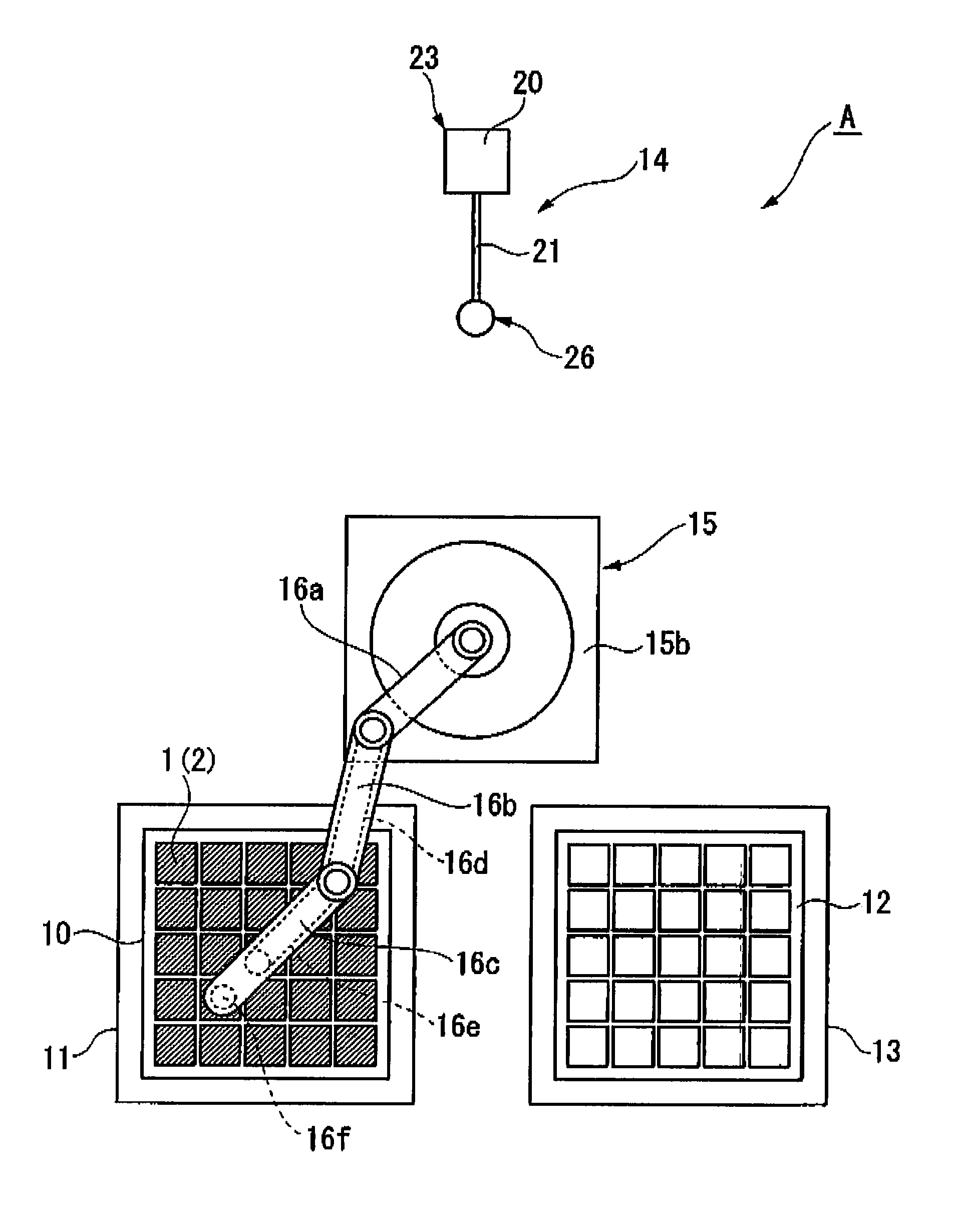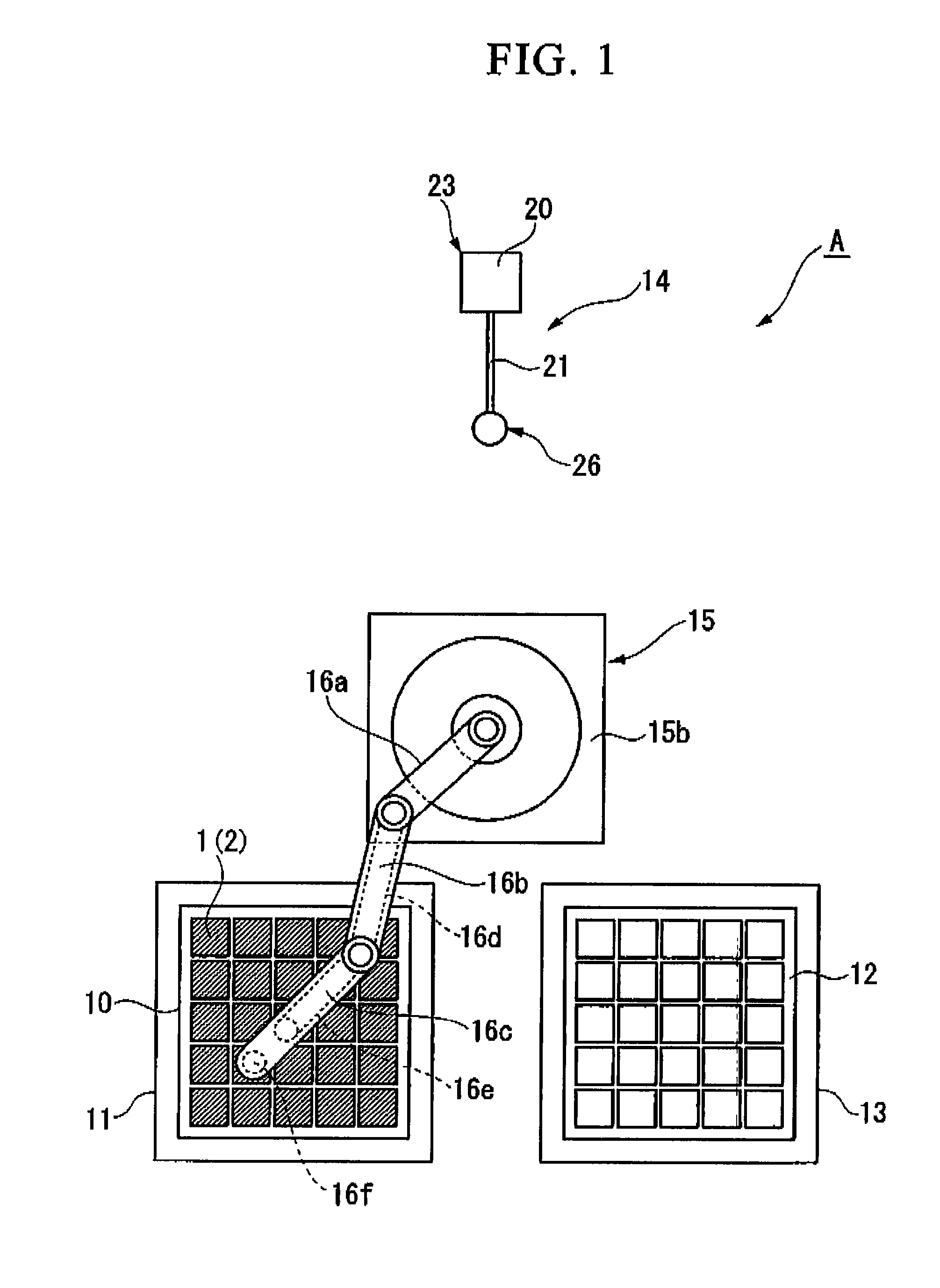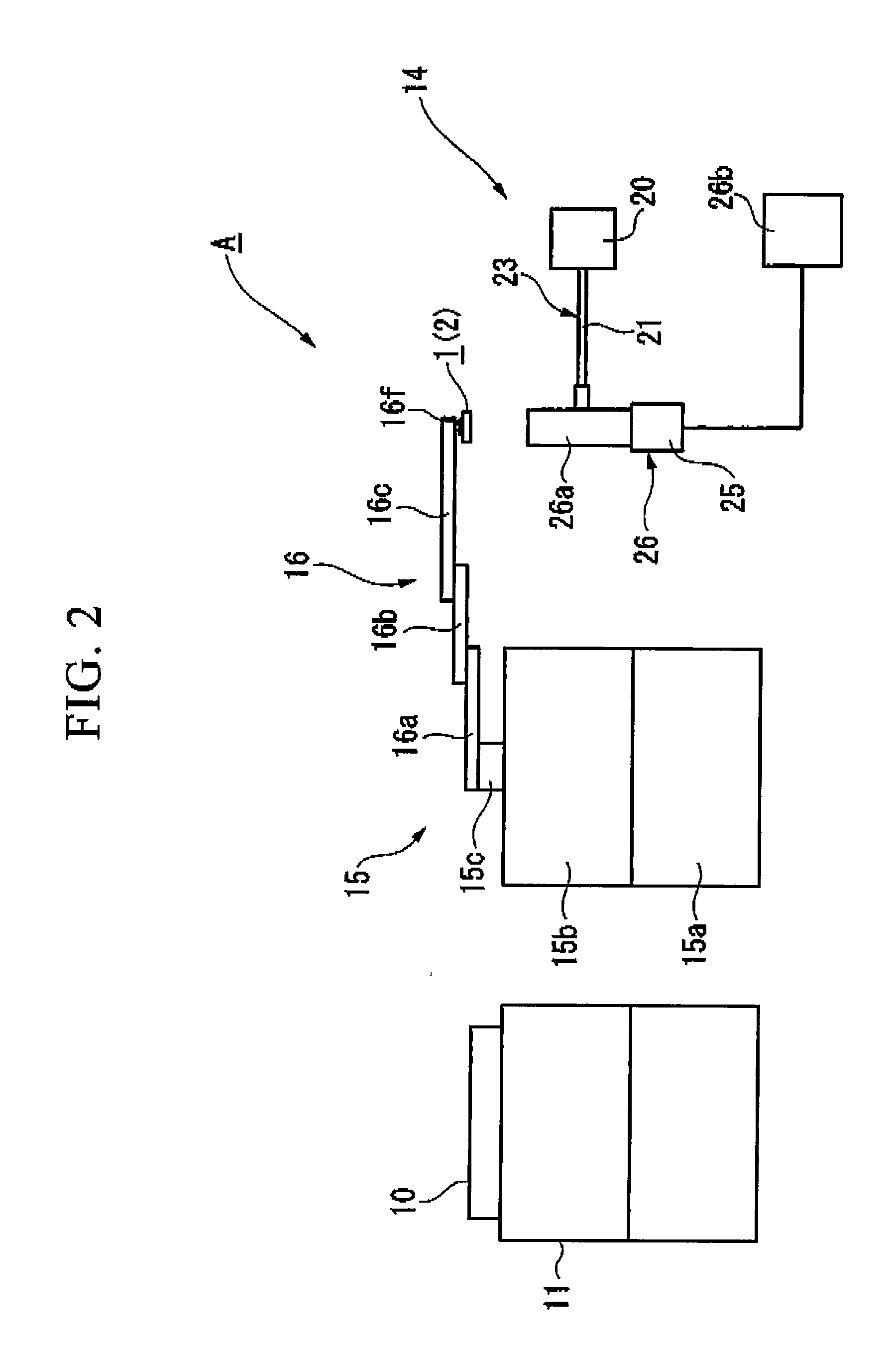Method and apparatus for inspection of wafer and semiconductor device
a technology for semiconductor devices and wafers, applied in semiconductor/solid-state device testing/measurement, optical radiation measurement, instruments, etc., can solve the problems of complex and troublesome ultrasonic inspection, secondary appearance defects of semiconductor chips, and the need for human power for ultrasonic inspection, so as to improve inspection efficiency and remove the “defective” semiconductor chips. , the effect of improving the inspection efficiency
- Summary
- Abstract
- Description
- Claims
- Application Information
AI Technical Summary
Benefits of technology
Problems solved by technology
Method used
Image
Examples
first embodiment
1. First Embodiment
[0044]A method and apparatus for Inspection of a wafer, specifically, for detection of cracks occurring in an individually isolated wafer subjected to dicing, according to a first embodiment of the present invention will be described with reference to FIGS. 1 to 7.
[0045]Specifically, the first embodiment is directed to an inspection method of a wafer 2 forming a semiconductor chip 1 encapsulated in a wafer level chip size package (WL-CSP) and a crack inspection apparatus A of the wafer 2. Herein, an IC 3, a pad electrode 4, a re-wire 5 electrically connected to the IC 3 via the pad electrode 4, and an electrode terminal (i.e., a metal post) 6 are formed on a surface 2a of the wafer having a disk-like shape, which is composed of polycrystal silicon or monocrystal silicon, wherein resin sealing (i.e., formation of a resin layer 7) for protecting the IC 3 from heat, light exposure, and physical impact, and wherein in the last stage of manufacturing, the wafer 2 is su...
second embodiment
2. Second Embodiment
[0071]An inspection method for semiconductor chips according to a second embodiment of the present invention will be described with reference to FIGS. 12 to 18. As shown in FIGS. 12 and 13, a plurality of semiconductor chips 101 subjected to inspection are produced by way of a wafer 103 having a disk-like shape composed of polycrystal silicon or monocrystal silicon.
[0072]A plurality of ICs 105, pad electrodes 107, re-wires 109 electrically connected to the ICs 5 via the pad electrodes 107, electrode terminals (or metal posts) 111, and resin layers 113 to protect the ICs 105 from heat, light radiation, and physical impacts are formed on a surface 103a of the wafer 103. Then, the wafer 103 is subjected to cutting (or dicing) using a thin grindstone having a disk-like shape along dicing lines (or cutting lines) on the surface 103a, thus individually isolating a plurality of semiconductor chips 101.
[0073]In the aforementioned dicing process, a dicing tape 119 (i.e., ...
PUM
 Login to View More
Login to View More Abstract
Description
Claims
Application Information
 Login to View More
Login to View More - R&D
- Intellectual Property
- Life Sciences
- Materials
- Tech Scout
- Unparalleled Data Quality
- Higher Quality Content
- 60% Fewer Hallucinations
Browse by: Latest US Patents, China's latest patents, Technical Efficacy Thesaurus, Application Domain, Technology Topic, Popular Technical Reports.
© 2025 PatSnap. All rights reserved.Legal|Privacy policy|Modern Slavery Act Transparency Statement|Sitemap|About US| Contact US: help@patsnap.com



